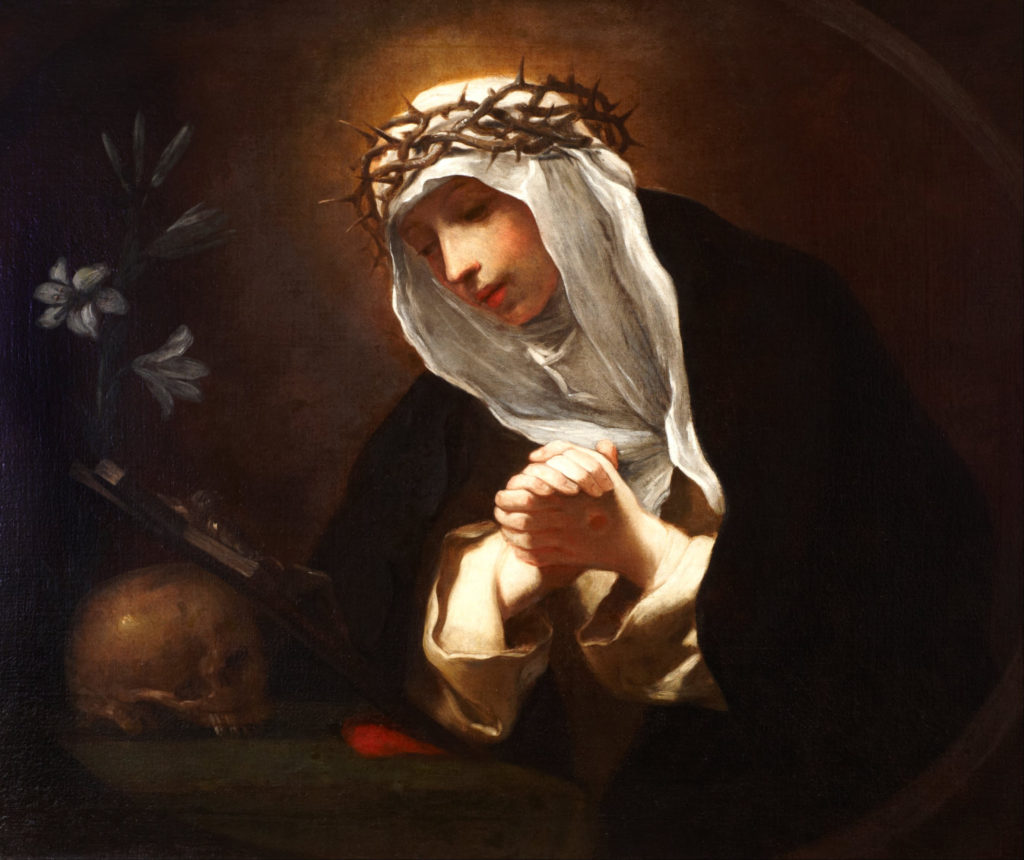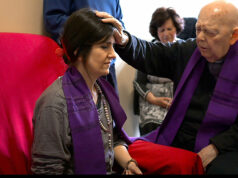“Be who God meant you to be and you will set the world on fire.” ― St. Catherine of Siena
What an amazing quote from St. Catherine of Siena, virgin and mystic. She seems to be telling us that by following God’s plan will we not just be our best selves but will actually be influential in the world. This thought comes from a woman who herself was a powerful force in the medieval church, and who was so spiritually gifted that her writings led her to be the first woman to be named a “Doctor of the Church,” one of only four women to bear this honor.
St. Catherine of Siena was born as Caterina Benincasa on March 25, 1347 in Siena, Tuscany, Italy. According to several online biographies, she was the 24th of 25 children (many of whom did not survive) and a twin; her twin sister Giovanna did not survive infancy.
As a young woman, Catherine knew she wanted to devote her life to God and defied her parents when the wished to set her up in an arranged marriage, cutting off her hair and adopting religious dress. She had great devotion to St. Dominic but did not join the local Dominican religious order. Instead she became a Third Order Dominican, or tertiary, living a chaste and religious life outside of a convent. She is often depicted in what we would consider traditional religious garb and lived a life of fasting and prayer.
As a mystic, Catherine reported seeing visions of Jesus as early as her teens. At age 21, she declared that she had entered into a “mystical marriage” with Jesus, being “married” to him spiritually. Some portraits also depict her with the marks of stigmata, which she received at age 28 while meditating in front of a crucifix.
Because she lived outside the confines of convent life, Catherine was able to focus her life’s work on caring for the local sick and poor. However, she was also an influential figure in the greater life of the Church. During the Great Schism she wrote letters to religious and civic leaders urging them to support the Pope and was considered influential in having the papacy returned to Rome from Avignon.
The most notable of St. Catherine of Siena’s writings is The Dialogue of Divine Providence, which historical accounts say she dictated to secretaries to transcribe.
She died in 1380 at age 33 from complications from a stroke. Her burial details are interesting, to say the least — she’s technically buried in three different places. She was originally interred at the Basilica of Santa Maria sopra Minverva in Rome. However, the people of Siena wished to move her body to claim her as their own; Stories say they stole into the basilica at night and absconded with her skull. When guards stopped the thieves, only rose petals could be seen in the bag where her skull should have been. Her head, along with her thumb, now rest in the Basilica San Domenico in Siena. A relic of her foot is in a reliquary in a church in Venice.

St. Catherine of Siena was canonized in 1461. She was named a Doctor of the Church on Oct. 4, 1970 (with St. Teresa of Avila) by Pope Paul VI. When the pope declared her a Doctor of the Church, he said, “Catherine of Siena is one of the outstanding figures of medieval Catholicism, by the strong influence she has had in the history of the papacy and her extensive authorship.”
More information:
Her feast day is April 29. She is the patron of Italy, Europe, fire prevention and the Diocese of Allentown.
Read St. Catherine of Siena’s biography at Franciscan Media here:
If you travel to Siena, you can visit the house where Catherine grew up, which is now a museum. https://www.italyguides.it/en/tuscany/siena/house-of-st-catherine-of-siena
If you’re not squeamish, more information and a photo of her skull in the basilica in Siena can be found here.
Novena/prayer: St. Catherine of Siena wrote 18 prayers during her life, the most well-known is the Holy Spirit prayer, found here.








